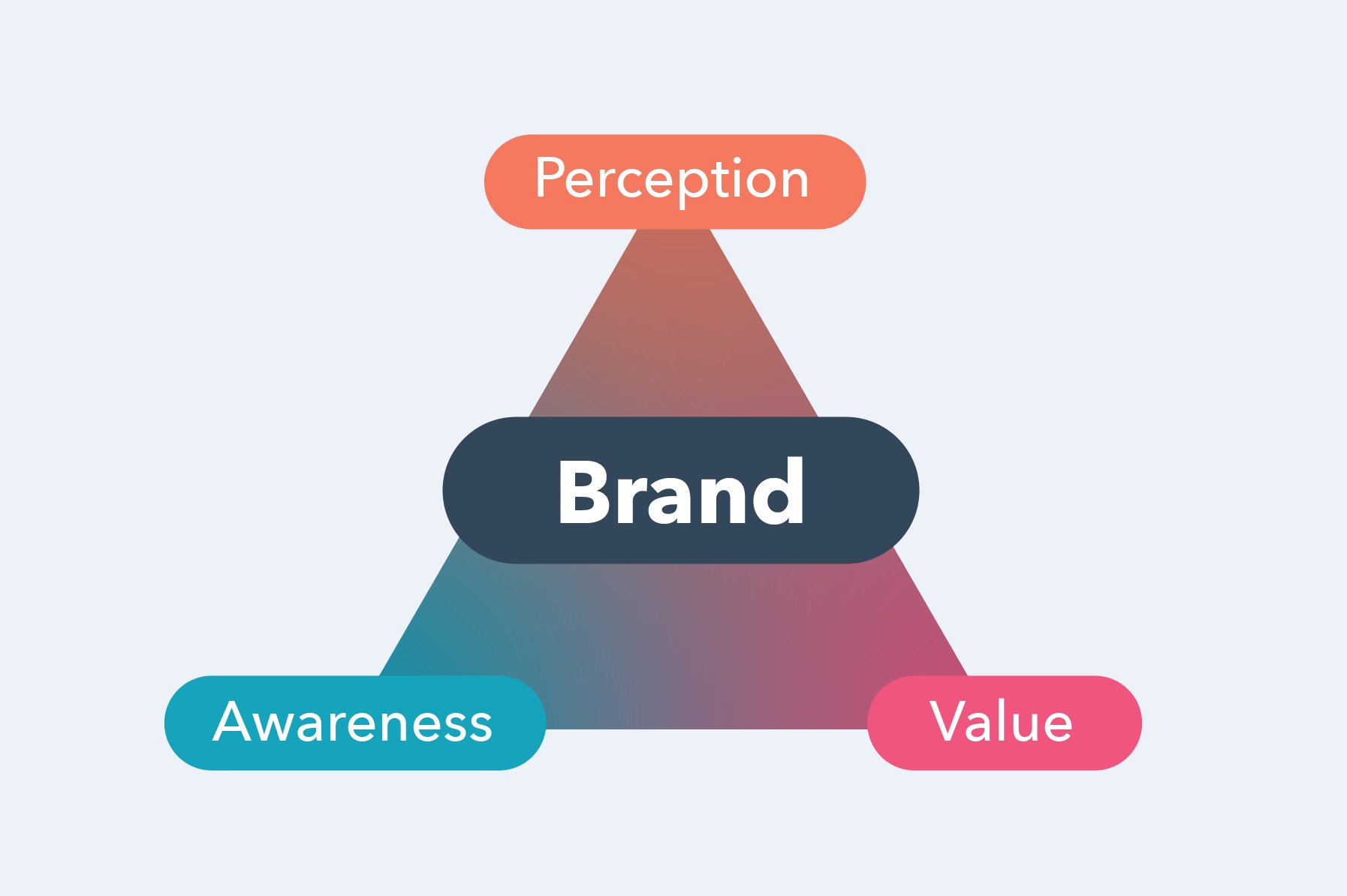If you take a second to think about your shopping habits, you'll probably realize that a majority of the products you buy are influenced by brand perception. You're not the only one — 77% of B2C consumers make purchasing decisions based solely on the brand name.
Brand perception, or the thoughts and feelings associated with a company, impacts why people wear a certain brand of clothing or pick one pasta sauce over another at the grocery store. Once consumers adopt an attitude about a brand, it's tough to change. That's why brands work hard to create positive associations in people's minds, rather than negative or neutral perceptions.
When you know how people perceive your brand, it's easier to shape its reputation, help consumers understand what sets it apart, and develop brand equity. You do this by measuring brand perception and tracking customer sentiment over time.
But before diving into the metrics, it's important to understand what creates brand perception and how it informs company and consumer decision-making.
What is brand perception?
Brand perception is the sum of a consumer's feelings, experiences, and thoughts about a product or service. It's what people believe a brand represents, rather than what a brand says it represents.

Although brand perception is a mental association, it plays an essential role in creating emotional connections with consumers. People consider their attitude toward brands when choosing between competing products. They read reviews, chat with customer support, compare options with friends, or sign up for a free trial. All of these touchpoints affect brand perception and impact a company's success.
If consumers think highly of a brand, they become more loyal to it. Consider how this dynamic plays out in everyday life. People get in meme wars over Apple versus Android products. A person who wears Nike shoes usually won't be caught in Adidas kicks. And you probably won't find Coca-Cola and Pepsi in the same fridge.
Companies that understand brand perception use this information to develop brand equity. While brand perception can be narrowed down to what one customer thinks about your brand, brand equity is the combination of people's perceptions, experiences, and opinions that creates your reputation. A company with high brand equity attracts loyal customers who pick your product or service when given the choice between competitors.
When a customer is loyal to a brand, 86% will recommend it to friends or family and 66% are likely to write a positive review. Those actions drive company growth and improve brand perception, which only helps your business.
Although it may seem that brand perception is out of your hands, you can take steps to measure it and improve people's attitudes.
How to Measure Brand Perception
Data can help you understand how consumers, employees, stakeholders, and competitors perceive your brand. Since brand perception is a combination of reviews, reputation, experience, functionality, advertising, social engagement, and customer use, you should gather metrics from multiple sources.
Here's how to measure brand perception:
- Conduct brand perception surveys to learn what people think of your business and how it stacks up against competitors. Ask questions that touch on emotional, cognitive, and action-oriented factors, such as these examples from Qualtrics:
- When you think of [the brand], what comes to mind first?
- Which of the following words describe [the brand]?
- What kind of feelings do you experience when you think of [the brand]?
- How would you describe your level of emotional attachment to [the brand]?
- How would you describe [the brand] to a friend?
- How would you describe your last experience with [the brand]?
- On a scale of 1-10, how likely are you to recommend [the brand] to a friend or colleague?
- Track online mentions using social listening tools or Google alerts. You want to monitor social media comments, online reviews, relevant hashtags, forums (i.e. Reddit and Quora), and news mentions. As the brand grows, so will this dataset. I recommend creating a system to handle negative mentions as soon as possible and stay on top of talk about your brand, products, and marketing campaigns.
- Do a brand audit to evaluate how your brand perception compares to competitors'. This should include research on primary and secondary target audiences, a competitive analysis of your products or services, a thorough evaluation of your communications strategy, and a deep dive into your brand positioning. (I recommend referencing this brand audit guide from Visme).
- Collect data from customers at each point of the buyer's journey. This can include how buyers research information, evaluate products, compare between competitors, interact with customer support, make a purchase decision, onboard, and interact with the brand post-purchase.
Once you have enough data to measure brand perception, you can evaluate if consumer sentiment aligns with your brand identity. If so, stay the course. If not, you can learn how to improve consumer brand perception.
Brand Perception Examples
From PR campaigns to packaging, brand perception is influenced by every touchpoint people have with a company. The following brand perception examples show how businesses can shape consumer sentiments so the inner identity matches the outer image.
1. Snickers
Candy lovers can choose between dozens of chocolate-covered bars, so what makes someone grab a Snickers instead of a Kit Kat? Yes, it may be taste or preference, but the brand has designed clever campaigns to make people believe that eating Snickers will transform you from hangry and unfocused to sharp and satisfied.
2. Orangetheory
You may have driven past one of these orange-hued workout studios on your daily commute or taken an online class during the pandemic. And while fitness crazes come and go, Orangetheory has carved out a brand perception that's kept the company going strong since 2010. The community-oriented classes make it the right fit for people looking to connect and compete with neighbors while working up a sweat. It's more casual than Crossfit but kicks up the intensity compared to group classes at national gyms, like Planet Fitness and LA Fitness.
3. Zoom
An innovative and beloved video platform at the start of the pandemic, Zoom quickly became the cause of remote workers' burnout. People loved how it kept them connected to teams, families, and friends.
But the constant connection led to "Zoom fatigue," an informal diagnosis that's been covered by Healthline, Stanford, the New York Times, and more. While companies still rely on Zoom for virtual meetings, the brand has had to adjust from its original "Video conferencing that doesn't suck" vibe to "How the world connects" as consumers shifted their perceptions.
4. Patagonia
The outdoor gear brand became famous for its innovative clothing and focus on responsible manufacturing, but a change in consumer perception caused the company to double down on its sustainability-driven identity.
In the early 2010s, people began referring to the company as Patagucci — a satirical name that poked fun at the brand's high prices and its adoption among high-income workers. To sway consumers from placing Patagonia in the fast-fashion category, the company has launched a number of sustainability-focused initiatives, like its Worn Wear line of recycled clothing.
Knowing what people think of your brand is an important part of developing a successful business. It gives you the information you need to shape your brand identity, create impactful marketing campaigns, and make changes when consumer perception shifts.
Now that you know how to measure brand perception, you can use it as a tool to make strategic brand decisions and drive your company forward.
What Is Brand Perception? How to Measure It and 4 Examples was originally posted by Local Sign Company Irvine, Ca. https://goo.gl/4NmUQV https://goo.gl/bQ1zHR http://www.pearltrees.com/anaheimsigns


No comments:
Post a Comment